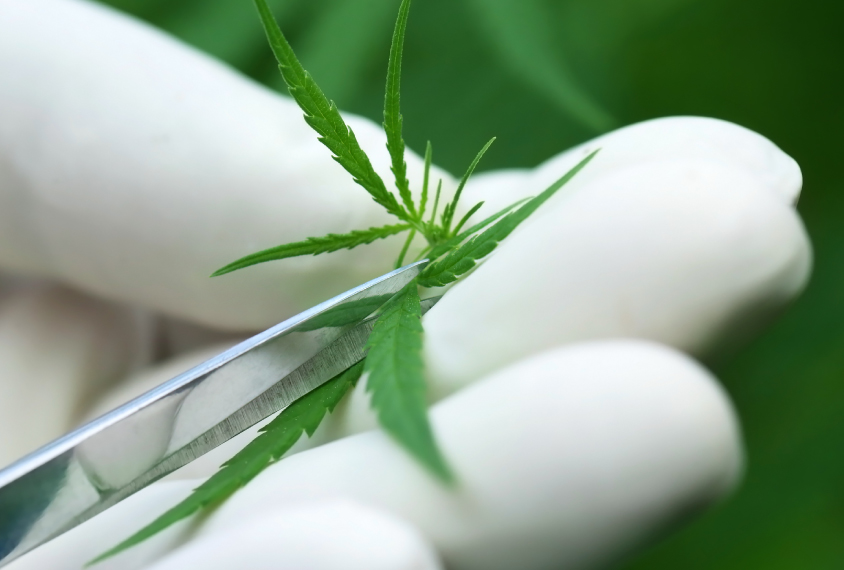
Marijuana compound curbs seizures by pushing ‘brakes’ in brain
A compound derived from marijuana may treat a severe form of epilepsy by dampening brain activity.
A compound derived from marijuana may treat a severe form of epilepsy by dampening brain activity, a new study suggests1.
In July, another team reported that in a clinical trial of 120 children with this form of epilepsy, called Dravet syndrome, the compound decreased the frequency of seizures. Dravet syndrome is often accompanied by autism.
The new study clarifies how this compound, cannabidiol, works to ease the seizures: It acts by inhibiting the activity of neurons, and it does so through a receptor called GPR55. In mice, the drug also improves social behavior.
“[The findings] helped to strengthen the case that cannabidiol is an important therapeutic option for Dravet syndrome,” says co-lead researcher William Catterall, professor of pharmacology at the University of Washington in Seattle. The results appeared 17 October in the Proceedings of the National Academy of Sciences.
The findings support the theory that autism and related conditions stem from an imbalance between excitatory and inhibitory brain signaling. “To the extent that we learn about how drugs act in Dravet syndrome, I think we may also be learning interesting things about autism,” Catterall says.
The new work also validates GPR55 as a potential target for epilepsy treatments.
“This study is superbly done,” says Orrin Devinsky, director of the New York University Comprehensive Epilepsy Center, who led the clinical trial of cannabidiol. “It’s very enlightening on how cannabidiol is working in Dravet syndrome.” (Devinsky advised Catterall on the experimental design but was not otherwise involved in the work.)
Soft signal:
Most cases of Dravet syndrome are caused by a mutation in the gene SCN1A. Catterall and his team studied mice with a mutation in one copy of this gene. Like children with Dravet syndrome, the mice have seizures spontaneously and in response to heat.
The researchers injected adult mice with high doses of cannabidiol twice over four hours. The frequency of spontaneous seizures in the mice decreased by 70 percent.
They also injected the mice with cannabidiol an hour before gradually raising the mice’s body temperature to 38 degrees Celsius, which triggered seizures. The seizures were 61 percent shorter and 28 percent less severe in mice treated with cannabidiol than in untreated mice.
The researchers then recorded neural activity in brain slices from Dravet mice and controls. They homed in on neurons from a part of the hippocampus called the dentate gyrus, which helps control seizures.
They found 40 percent less inhibitory signaling in the Dravet mice than in controls. Treating the brain slices from Dravet mice with cannabidiol normalizes the levels of inhibitory signaling.
Right receptor:
Other studies have suggested that cannabidiol affects the brain by activating GPR55. Catterall’s team found that another compound that blocks GPR55 activity mimics the effects of cannabidiol in the brain slices from Dravet mice. Adding cannabidiol has no additional effect on these slices.
The finding suggests that cannabidiol eases seizures by inhibiting GPR55.
The study hints that targeting GPR55 may be useful for treating Dravet and other forms of epilepsy. “Once you have a target, you can improve the compound,” says George Kunos, scientific director of the National Institute on Alcohol Abuse and Alcoholism in Bethesda, Maryland, who was not involved in the study.
Treating Dravet mice with a low dose of cannabidiol also normalizes their social behavior. After the treatment, Dravet mice spent more time interacting with their cagemates and made fewer attempts to escape social situations than did untreated mice.
Catterall’s team previously reported that a low dose of an anti-anxiety drug called clonazepam alleviates social and other behaviors in mouse models of Dravet and autism. High doses, however, have no effect. Why this would be the case is not well understood, Catterall says. It may be that slightly more inhibition improves social functioning, whereas too much inhibition prevents the benefits.
The concept is analogous to a television’s volume, Catterall says. “If you dial it up a little bit, you can hear things pretty well, but if you dial it up to the top, you can’t understand what’s going on because it’s so loud and garbled.”
It is also unclear whether cannabidiol can improve social behavior in people. Devinsky says he did not see any such effects in the clinical trial, but the trial was not intended to assess social skills.
Catterall and his team are working to optimize the dose of cannabidiol to prevent seizures in Dravet mice. They are also investigating the compound’s effects in mice with a mutation in GPR55.
References:
- Kaplan J.S. et al. Proc. Natl. Acad. Sci. USA 114, 11229-11234 (2017) PubMed
Recommended reading

Expediting clinical trials for profound autism: Q&A with Matthew State

Too much or too little brain synchrony may underlie autism subtypes
Explore more from The Transmitter

This paper changed my life: Shane Liddelow on two papers that upended astrocyte research
Dean Buonomano explores the concept of time in neuroscience and physics

